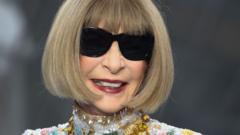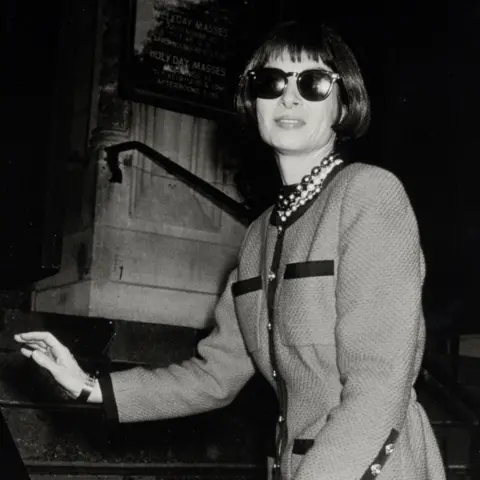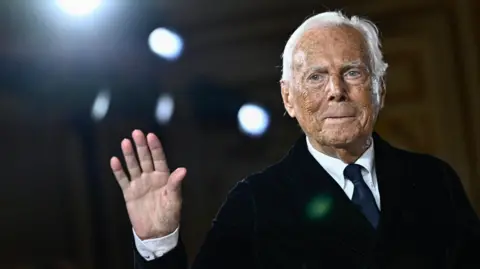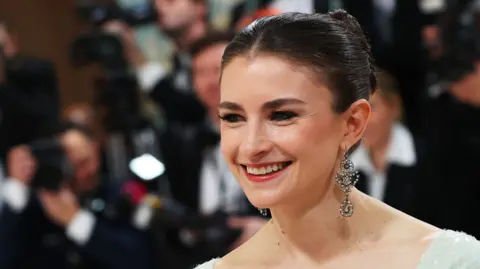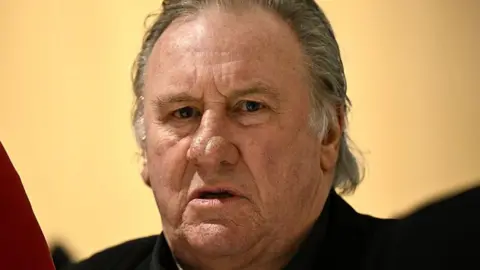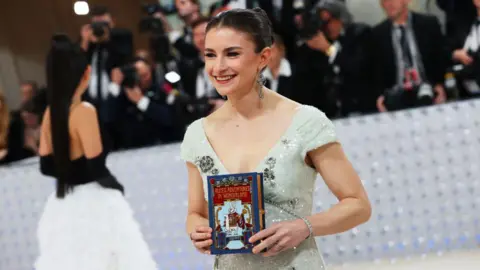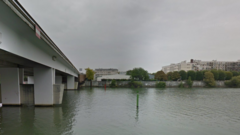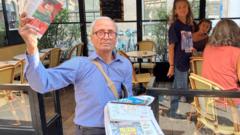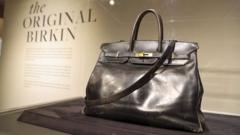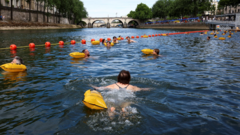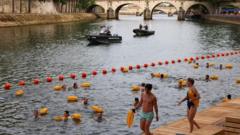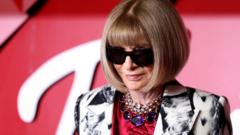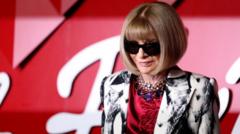The article:
As I step into the underground space housing the "VOGUE: Inventing the Runway" exhibition, it’s hard not to feel the weight of fashion history enveloping me. At its helm is Anna Wintour, the iconic editor-in-chief of Vogue magazine, known for her stimulating yet enigmatic presence. Flanked by towering digital displays, Wintour arrives with her signature dark sunglasses firmly in place, sparking curiosity about their purpose.
When asked if the shades serve as protection or are merely a statement, Wintour replies cryptically, “They help me see and they help me not see. They help me be seen and not be seen. They are a prop, I would say.” Set in the immersive environment of the Lightroom in London, the exhibition captures pivotal moments in fashion, enabling visitors to experience highlights from the runway as though they were front-row attendees—a perspective only Wintour has experienced repeatedly.
"The feeling of waiting for fashion shows, sometimes tardy, is well-known,” she reveals. “I’ve probably spent a year of my life anticipating these events.” Recalling an incident with American designer Marc Jacobs, who once delayed a show by an hour and a half, she humorously cites the annoyance expressed by attendees that compelled him to start his next show early.
Throughout our discussion, Wintour reflects on the metamorphosis of the fashion industry—from an exclusive realm to an inclusive social event celebrated across cultures. She marvels at how Pharrell Williams’ Louis Vuitton debut in Paris overshadowed past elitist traditions, stating, “Now everyone can come to the party, which is as it should be.”
Her seasoned eye has monitored dramatic transformations in runway presentations, from Karl Lagerfeld's otherworldly set designs to the confluence of fashion and pop culture we often witness today. Wintour, noted for her precision and punctuality, emphasizes the importance of being present for crucial moments.
Yet the conversation inevitably drifts toward her reputed persona; many liken her to the fictional Miranda Priestly from "The Devil Wears Prada." Wintour embraces this comparison, mentioning she attended the gala for the musical adaptation, allowing the audience to draw parallels. However, she claims, “I don’t really think about it. What I’m really interested in is the creative aspect of my job.”
Despite her formidable reputation, Wintour refutes claims that everyone in fashion is intimidated by her decisions. "They often say no, but that’s a good thing. No is a wonderful word,” she calmly asserts. Under her stewardship, Vogue has thrived as a platform for creativity, establishing the Met Gala as the pinnacle of celebrity and fashion fusion.
Wintour’s legacy speaks to her dual role as both a fashion ambassador and a leading journalist. “Fashion is not merely frivolous—it’s a significant global business,” she insists, highlighting the livelihoods sustained by the industry's ecosystem. She envisions a future where Vogue continues to wield influence and authority in a rapidly evolving landscape.
At 75, Wintour shows no signs of stepping down, stating earnestly, “I have no plans to leave my job.” For now, her mark on the fashion world remains indelible. The exhibit “VOGUE: Inventing the Runway” runs until April 2025 at Lightroom, London, offering an immersive journey through fashion’s rich history.
As I step into the underground space housing the "VOGUE: Inventing the Runway" exhibition, it’s hard not to feel the weight of fashion history enveloping me. At its helm is Anna Wintour, the iconic editor-in-chief of Vogue magazine, known for her stimulating yet enigmatic presence. Flanked by towering digital displays, Wintour arrives with her signature dark sunglasses firmly in place, sparking curiosity about their purpose.
When asked if the shades serve as protection or are merely a statement, Wintour replies cryptically, “They help me see and they help me not see. They help me be seen and not be seen. They are a prop, I would say.” Set in the immersive environment of the Lightroom in London, the exhibition captures pivotal moments in fashion, enabling visitors to experience highlights from the runway as though they were front-row attendees—a perspective only Wintour has experienced repeatedly.
"The feeling of waiting for fashion shows, sometimes tardy, is well-known,” she reveals. “I’ve probably spent a year of my life anticipating these events.” Recalling an incident with American designer Marc Jacobs, who once delayed a show by an hour and a half, she humorously cites the annoyance expressed by attendees that compelled him to start his next show early.
Throughout our discussion, Wintour reflects on the metamorphosis of the fashion industry—from an exclusive realm to an inclusive social event celebrated across cultures. She marvels at how Pharrell Williams’ Louis Vuitton debut in Paris overshadowed past elitist traditions, stating, “Now everyone can come to the party, which is as it should be.”
Her seasoned eye has monitored dramatic transformations in runway presentations, from Karl Lagerfeld's otherworldly set designs to the confluence of fashion and pop culture we often witness today. Wintour, noted for her precision and punctuality, emphasizes the importance of being present for crucial moments.
Yet the conversation inevitably drifts toward her reputed persona; many liken her to the fictional Miranda Priestly from "The Devil Wears Prada." Wintour embraces this comparison, mentioning she attended the gala for the musical adaptation, allowing the audience to draw parallels. However, she claims, “I don’t really think about it. What I’m really interested in is the creative aspect of my job.”
Despite her formidable reputation, Wintour refutes claims that everyone in fashion is intimidated by her decisions. "They often say no, but that’s a good thing. No is a wonderful word,” she calmly asserts. Under her stewardship, Vogue has thrived as a platform for creativity, establishing the Met Gala as the pinnacle of celebrity and fashion fusion.
Wintour’s legacy speaks to her dual role as both a fashion ambassador and a leading journalist. “Fashion is not merely frivolous—it’s a significant global business,” she insists, highlighting the livelihoods sustained by the industry's ecosystem. She envisions a future where Vogue continues to wield influence and authority in a rapidly evolving landscape.
At 75, Wintour shows no signs of stepping down, stating earnestly, “I have no plans to leave my job.” For now, her mark on the fashion world remains indelible. The exhibit “VOGUE: Inventing the Runway” runs until April 2025 at Lightroom, London, offering an immersive journey through fashion’s rich history.

